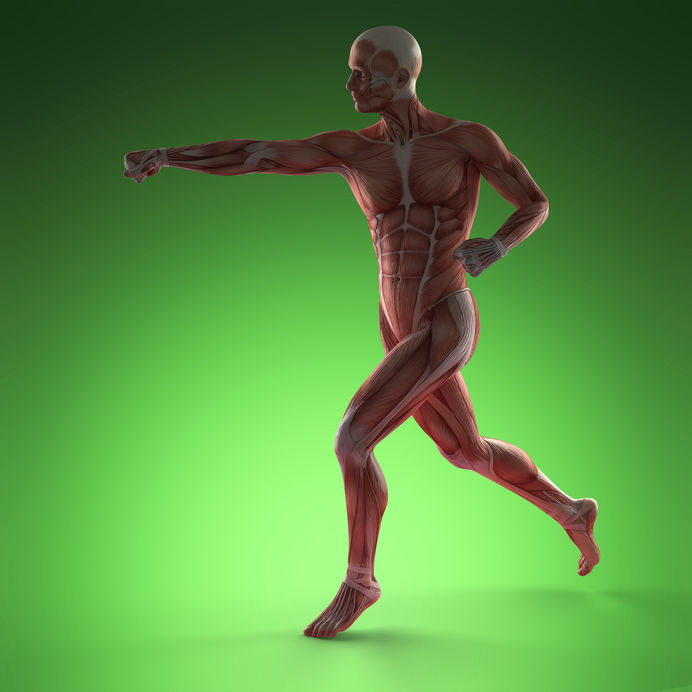Do They Walk Their Talk?
Matthew 7:15 cautions us to “Beware of false prophets.” By their external appearance, they look authentic and may even do or say some of the right things. Like wolves in sheep’s clothing, they appear to be the real deal on a superficial level, but inwardly they are vicious and destructive. So how can you tell a true prophet from a false one? The answer is, do they bear good fruit—do they walk their talk?
The concluding section of the Sermon on the Mount makes use of the “Two Ways” tradition of early Christianity and Judaism. In three illustrations, Jesus plainly showed there are only two categories of people in the world—those who enter by the narrow gate rather than the wide gate (vv. 13-14), those who bear good fruit rather than bad (vv. 15-20), and those who build their homes on solid rock rather than shifting sand (vv. 24-27). In his commentary Leon Morris commented, “In each case the first category refers to those who hear, obey, and are saved; the second, to those who only hear and so are destroyed.” In other words, not everyone who says they are a Christian, is a Christian. They have to show it.
15 “Beware of false prophets, who come to you in sheep’s clothing but inwardly are ravenous wolves. 16 You will recognize them by their fruits. Are grapes gathered from thornbushes, or figs from thistles? 17 So, every healthy tree bears good fruit, but the diseased tree bears bad fruit. 18 A healthy tree cannot bear bad fruit, nor can a diseased tree bear good fruit. 19 Every tree that does not bear good fruit is cut down and thrown into the fire. 20 Thus you will recognize them by their fruits. (Matthew 7:15-20)
The contrast of the two ways is not found in the other gospels, but it does appear in the Old Testament (Deuteronomy 30:19; Psalm 1:6, Jeremiah 21:8); in Jewish writings (2 Esdras 7:6-13); and in early Christian literature, like Didache 1:1: “There are two ways, one of life and one of death, and there is a great difference between the two ways.” Some may verbally affirm that Jesus is Lord, and even preach the gospel, but inwardly are insatiably after their own interests. They are like ravenous wolves. So how can you tell who is a wolf in sheep’s clothing? By their fruits: “Their fruits will in the end betray them.”
Jesus used an illustration from the everyday life of his audience to demonstrate this. Everyone knew that the buckthorn had small black berries that could be mistaken for grapes. And there was a thistle whose flower could be mistaken for a fig, from a distance. However, as D.A. Carson said, “But no one would confuse the buckthorn and the grape once he started to use the fruit to make some wine. No one would be taken in by thistle flowers when it came to eating figs for supper.” The same principle is true of trees—a good tree bears good fruit; a diseased tree bears bad fruit.
Here the thought is that it is not the outward appearance that is important (wolves may be dressed up to look like sheep), but the things the false prophets do, the produce of their manner of thought and life. If the disciples take note of what these false prophets do and refuse to be charmed by their false words, they will recognize them for what they are.
If a tree is healthy, it cannot bear bad fruit. Conversely, a diseased tree cannot bear good fruit. The repetition emphasizes the point. Then Jesus moved to the fate of every diseased trees: “No bad tree is allowed to continue producing its bad fruit.” The consequence is universal; it is cut down and burned.
The burning of a worthless tree removes the possibility that it will infect other trees. But fire is often used of the fire of hell, and this meaning may be not far away. Jesus is making it clear that discipleship means a great deal more than religious activity.
So then, the logical conclusion of Jesus’ teaching here is a repetition of verse 16. “You will recognize them by their fruits.” The good fruit of a person’s life is the evidence of their claim to be a prophet. And since good fruit cannot grow on a diseased tree, you can discern a false prophet by their fruit as well. False prophets, like diseased trees, should be cut down and thrown into the fire.
The Old and New Testaments contain multiple warnings against false prophets. They commit adultery, walk in lies and strengthen the hands of evil doers (Jeremiah 23:14); they are treacherous and do violence to the law (Zephaniah 3:4); they prophesy lies in the name of God, the deceit of their own minds (Jeremiah 14:14). The Bible suggests these false declarations come from their own hearts (Ezekiel 13:2, 4; Jeremiah 23:16, 26). We can suggest that at least one of the ways to uncover a false prophet is to watch and see if they demonstrate their love for God by walking their talk. But what if the false prophet is a wolf in sheep’s clothing—what if they appear good on the outside?
There is a root and fruit connection to our actions (fruit) and our heart (root). A “healthy tree bears good fruit, but the diseased tree bears bad fruit.” The parallel to our Matthew passage in Luke 6:43-45 declared the good person produces good treasure from his heart and the evil person produces evil treasure from his heart, “for out of the abundance of the heart his mouth speaks.” In Instruments in the Redeemer’s Hands, Paul Tripp illustrated this process in his discussion of fruit stapling, where efforts to change behavior ignore the heart behind the actions.
Drawing on the fruit tree metaphor in the Luke passage, he asks us to imagine that he has an apple tree in his backyard. Year after year the apples are dry, wrinkled, brown and pulpy. His wife says it doesn’t make any sense to have an apple tree that doesn’t produce good fruit and suggests that Paul cut down the tree and burn it. Instead, he buys branch cutters, an industrial grade staple gun, a ladder and two bushels of apples. He climbs the ladder, cuts off all the pulpy apples, and staples shiny red apples on every branch of the tree. “From a distance our tree looks like it is full of a beautiful harvest.”
If a tree produces bad apples year after year, there is something drastically wrong with its system, down to its very roots. I won’t solve the problem by stapling new apples on the branches. They also will rot because they are not attached to a life-giving root system. And next spring, I will have the same problem again. I will not see a new crop of healthy apples because my solution had not gone to the heart of the problem. If the tree’s roots remain unchanged, it will never produce good apples.If my heart is the source of my sin problem, then lasting change must always travel through the pathway of my heart. It is not enough to alter my behavior or to change my circumstances. Christ transforms people by radically changing their hearts. If the heart doesn’t change, the person’s words and behavior may change temporarily because of an external pressure or incentive. But when the pressure or incentive is removed, the changes will disappear.
Sooner or later they will show the wolf; a diseased tree always bears bad fruit. They cannot consistently walk the talk because the seemingly “good fruit” does not come from a changed heart.
The root-and-fruit principle applies readily to 12 Step recovery. Several of the sayings used in recovery, such as walking your talk, he’s on a dry drunk, you can’t be clean while living dirty, are illustrations of it. It even applies to judging your spiritual experiences and whether or not you can ever ‘get’ clean.
Bill W. wrote an article originally published in the Grapevine in July of 1962, “Spiritual Experiences.” It was later added to a collection of his Grapevine writings, The Language of the Heart. He said he was the recipient of a tremendous mystic experience in 1934 that was “accompanied by a sense of intense white light, by a sudden gift of faith in the goodness of God, and by a profound conviction of his presence.” He said in retrospect, the only special feature was its electric suddenness and the overwhelming and immediate conviction that it carried to him. “In all other respects, however, I am sure that my own experience was not in the least different from that received by every AA member who has strenuously practiced our recovery program.”
He said when a person approached him to find out how to have a sudden spiritual experience, he tells them that in all probability they have had one just as good, except it was strung out over a longer period of time. If a spiritual transformation over six months had been condensed into six minutes, “well they then might have seen the stars, too!” He failed to see any great difference between the sudden and more gradual experiences; they were certainly all of the same piece. The one sure test of any spiritual experience was, “By their fruits, ye shall know them.”
As Bill Sees It is a collection of selected writings by Bill W. In there was an excerpt from a 1958 letter Bill wrote to a person discouraged over repeated “slips,” lapses back into active drinking. The discouraged individual was thinking of not returning to A.A. because of his lapses. Bill advised him against staying away from A.A. because of feeling of discouraged or shameful of his lapses. “It’s just the place you should be.”
For some reason, Bill said, the Lord seemed to have him on a tougher path. But God was not asking for him to be successfully abstinent, “He is only asking us to try to be.” Here was the key feature in achieving lasting abstinence—a transformed heart; a surrender of your will and life to God after recognizing your powerlessness to do so in your own strength. And whether this spiritual experience was sudden or gradual, the sure test of whether it was real was by its fruit. If there was a true surrender, he would get the program. “It is not always the quantity of good things that you do, it is also the quality that counts.”
This is part of a series of reflections dedicated to the memory of Audrey Conn, whose questions reminded me of my intention to look at the various ways the Sermon on the Mount applies to Alcoholics Anonymous and recovery. If you’re interested in more, look under the category link “Sermon on the Mount.”










